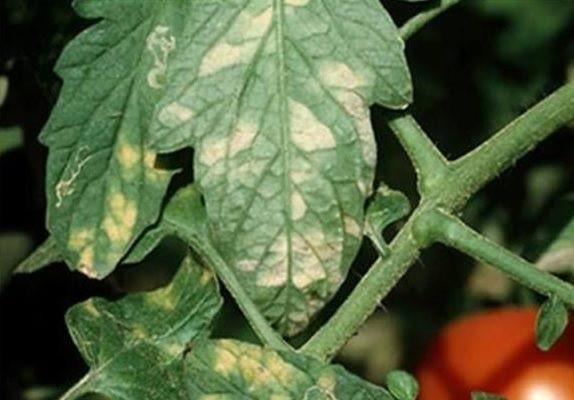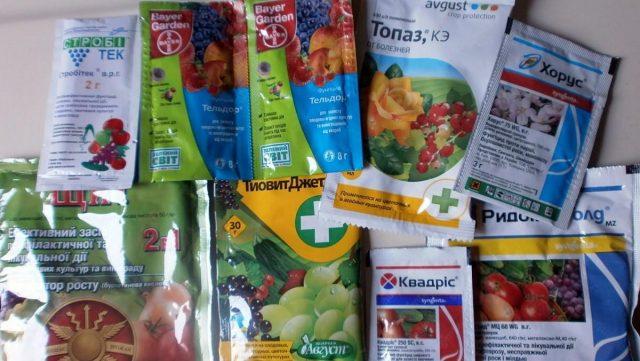Content
Powdery mildew is a disease from which the vast majority of garden crops are not immune. Tomatoes also suffer from it. The disease is quite easily recognized by its symptoms; in the early stages of development, it can be successfully combated with folk remedies. In severe cases, powdery mildew on tomatoes can be treated with biological products and chemicals with fungicidal properties. But, of course, it is better to prevent infection - agricultural techniques and preventive measures will help with this.
What kind of disease is this
Powdery mildew on tomatoes is a disease also known as “white” or “ashtray”. It is caused by a group of marsupial fungi. It develops quite quickly; the incubation period between the spores hitting the plant and the appearance of characteristic symptoms is about a week.

Tomatoes are not protected from powdery mildew infection either in the open ground, or in a greenhouse, or at home.
Reasons for appearance
Spores of the fungus that causes powdery mildew are very easily transported over long distances by gusts of wind. They are also spread by insects. Often the gardener himself contributes to the infection. It “transfers” pathogens from diseased bushes to healthy ones during watering, as well as during gardening, neglecting the disinfection of gloves, tools, and equipment.
“Risk factors” that increase the likelihood of tomatoes becoming infected with powdery mildew include:
- long-term rainy weather combined with large differences in day and night temperatures;
- excessive density of plantings;
- neglect of weeding;
- excess nitrogen in the soil;
- watering errors.

With this method of watering, fungal spores are very easily transferred from diseased bushes to healthy ones.
Signs of infection
The earliest symptom of powdery mildew on tomatoes is small pale green or yellowish round spots on the undersides of the lower leaves. Gradually they “blur”, increasing in size, their surface is covered with a layer of grayish or whitish powdery or “hairy” coating, reminiscent of spilled flour. Drops of turbid liquid - exudate - ooze from infected tissues. Then the plaque becomes denser and darker, changing its hue to gray-violet.

The tissues under the plaque layer subsequently die - dry out or rot
If nothing is done, powdery mildew gradually “rises” higher up the leaves and moves to their front side. At the same time, it “spreads” onto the stems and fruits of tomatoes. The shoots lose their tone and droop and stop growing. The buds and ovaries wither, dry out and fall off. In ripening tomatoes, the skin becomes covered with “wrinkles” and dark “weeping” spots; they crack and rot.

At an early stage of development, powdery mildew on tomatoes looks relatively harmless
How dangerous is the disease?
If, within 3-4 days after the discovery of the first symptoms indicating that tomatoes are affected by powdery mildew, they are not given proper treatment, the process of tissue necrosis begins. This means “failures” in all vital processes for the plant, including photosynthesis and metabolism. As a result, the bushes practically stop developing, flowering and the formation of ovaries stop. Already existing buds and tomatoes dry out and fall off.

Tomato fruits with signs of powdery mildew are inedible; They should not be given to pets or livestock either.
Measures to combat powdery mildew on tomatoes
If powdery mildew damage to tomatoes is noticed in the initial stage, the bushes can be saved with the help of folk remedies.They are also used for preventive treatments. When time is lost, “heavy artillery” is used in the form of fungicides of chemical and biological origin.
Agrotechnical methods
Often the gardener himself is to blame for the infection of tomatoes with powdery mildew, making mistakes in care or simply “throwing away” the plantings. The following agrotechnical methods will help protect them from the disease:
- dressing seeds in a solution of a fungicide or folk remedy with antifungal properties;
- weeding tomatoes as needed;
- control of pests that are carriers of powdery mildew spores;
- loosening the soil in the garden bed;
- gradual “exposure” of the stem by removing the lower leaves;
- proper watering;
- applying nitrogen fertilizers exclusively at the beginning of the growing season, when tomatoes are actively growing green mass;

Only seeds that have already been treated with a fungicide by the manufacturer do not need to be treated.
Folk remedies
Folk remedies against powdery mildew are completely safe for plants and future harvests. They can be used at any time. The main disadvantage is the short-lived effect.
Solutions with antifungal properties (per 10 liters of water):
- baking soda or soda ash (2 tbsp.);
- whey or kefir (1 l) and iodine (12-15 drops);
- potassium permanganate (1.5-2 g, until bright pink).
Infusions are also prepared:
- wood ash (0.5 l jar) is poured with boiling water (3 l), left for 5-6 days in a dark, warm place;
- garlic or onion (chopped heads or “arrows”) are poured with warm water in a ratio of approximately 1:2, left for 3-4 days.

To protect against powdery mildew, tomatoes need to be sprayed every 10-15 days.
Chemicals
Agrochemicals are the most potent means for treating powdery mildew on tomatoes. They are used in strict accordance with the instructions, otherwise, you can cause harm to the plants themselves, the environment and your own health by eating tomatoes from improperly processed bushes.
Since each fungicide has its own “waiting period,” it is recommended to apply them before flowering. Then it is better to make do with biological products and folk remedies.
To combat powdery mildew on tomatoes, use:
- Quadris;
- Topaz;
- Bayleton;
- Acrobat MC;
- Horus;
- Speed;
- Privent;
- Ridomil-Gold;
- Abiga Peak.

When working with agrochemicals, wear clothing and shoes that minimize the risk of the solution getting on the skin
Biological products
The effectiveness of biological products against powdery mildew on tomatoes is due to the presence of bacteria or fungi in the composition, for which the pathogen is food or a “natural enemy”. They do not begin to act immediately, but they “work” more gently than chemicals and have a minimum “waiting period.”
Tomatoes with signs of powdery mildew can be treated:
- Fitosporin;
- Phytolavin;
- Phytocid;
- Gamair;
- Maxim;
- Alirin-B;
- Planriz;
- Bactofit.

In severe cases, biological products only slow down the development of the fungus, but do not completely “cure” the plants.
How to get rid of powdery mildew on tomatoes in a greenhouse
High humidity and air stuffiness are factors favorable for the development of powdery mildew fungus. Therefore, tomatoes in greenhouses suffer from this disease more often than in “street” beds. To protect them from powdery mildew, the greenhouse must be regularly ventilated.
Since in most cases the bushes “pick up” the fungus from the ground, the lower leaves of the tomatoes are gradually removed over time. For fruit ripening, a stem that is leafy in the upper third is sufficient. The lower two thirds are left “bare”.
Also in the greenhouse they practice “preventive” treatments with fungicides at intervals of 15-20 days. Before flowering, it is quite possible to use agrochemicals, after which they switch to biological products.

Tomatoes really don’t like cold drafts: they negatively affect the plant’s immunity, “making the job easier” for the pathogen
Prevention of powdery mildew on tomatoes
The following simple preventive measures will help to significantly reduce the risk of tomato infection with powdery mildew:
- Compliance with crop rotation rules. Tomatoes can be planted in the same place at intervals of 3-4 seasons. It is also not recommended to place other Solanaceae in the garden bed at this time.If you neglect the rules of crop rotation, pathogens that are dangerous to the crop accumulate in the soil, including the fungus that causes powdery mildew.
- Planning plantings on the site. “Neighborhood” of tomatoes with other Solanaceae is a bad idea. If one of the crops “catch” powdery mildew, there is a high probability that others will quickly become infected.
- Compliance with the landing plan. For each variety or hybrid of tomatoes, the seed manufacturer determines it, depending on the size of the bush. When plantings are “crowded”, favorable conditions are created for the activation of powdery mildew fungus and other pathogens.
- Regular inspections of plantings. If you do a walk-through every 5-7 days, you can notice powdery mildew on tomatoes at an early stage, when it is easier to deal with.
- Quality care. Competent agricultural technology has a positive effect on the overall endurance, “stress resistance” and immunity of tomatoes. They more successfully resist any pathogens, including powdery mildew.
- Disinfection of tools, equipment, gloves every time after work. This applies not only to caring for adult plants, but also tomato seedlings. By the way, before sowing the seeds, the substrate and soil also need to be disinfected.
- Autumn "cleaning". At the end of the season, all plant debris is removed from the tomato bed and burned. The soil is dug up or at least deeply loosened. This deprives the spores of the powdery mildew fungus from successfully overwintering.

In a greenhouse in the fall, it is advisable to partially replace the soil or disinfect it, treat all surfaces with an antiseptic
Resistant varieties
Resistance to powdery mildew, as a rule, “comes together” with the general endurance of the tomato variety or hybrid and the presence of good immunity in general. These properties have:
- Marmande;
- Roma;
- Scarlet candles;
- Dad;
- Bread and salt;
- Pink honey;
- Giant;
- Charisma F1;
- Vologda;
- Ural F1;
- Firebird F1;
- Bohemia F1;
- Blitz;
- Koenigsberg;
- Chio-chio-san;
- Yablonka Russia;
- Puzata hut;
- Waterfall;
- Geisha;
- Ilyich F1;
- Crimson giant.
Conclusion
Powdery mildew on tomatoes is a disease that leads to quite serious losses in the harvest. If characteristic symptoms are detected in time, it is quite possible to reduce damage to plants to a minimum by using folk remedies. When the process of disease development has already gone far, you will have to use biological products, agrochemicals and, possibly, get rid of heavily damaged bushes.








